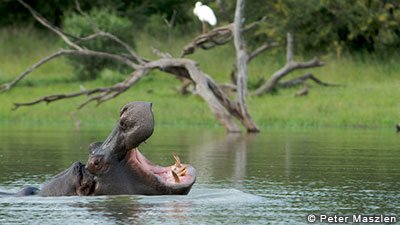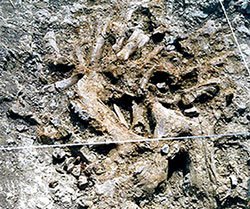Elephants and Hippos in Crete
Scientists and experts are trying to recompose and reconstitute the morphology of the fauna that dominated the plateau of Katharo in Lassithi, Crete 500.000 years ago. Scientists examine the fossils and traces of the animals found in the region, as well as grains of pollen.
Based on the findings of the excavations that takes place in Katharo the last few years, under the conduct and guidance of the professor of Geology and Palaeontology Michalis Dermitzakis and the Professor of Geology in the University of Athens Paris Pavlakis, 14.000 years ago hippos and elephants were living on the island of Crete; their extinction is probably due to their inability to find food and to the lack of appropriate and adequate food.
Crete is an island that emerged almost two million years ago. At the beginning, it was an empty island but the growth of plantation and woodlands gave space to many small animals and creatures of the animal kingdom, including birds.
Crete was, as is until today, separated from the mainland, a fact that did not allow the move of larger animals to the island. Almost 540.000 ago, during the Ice Age, the distance between the island of Crete and the Peloponnese was reduced, due to the changes that occurred to the level of sea. During that time small herds of hippos managed to float in the sea water and reach the shores of Crete, driven there by the sea currents.

In Crete, the hippos found a huge land, free of other big mammals. The only other mammals, of that size that existed there, were the elephants that probably came to the island in a similar way.
The lack of carnivore animals and predators contributed to their development and multiplication, but the true problems started exactly because of that: the profuse increase of the population of these mammals resulted in the uncontrollable exhaustion of the natural resources. The mammals had a hard time finding enough and proper food, therefore, trying to adapt and adjust to the new conditions and circumstances, the hippos and elephants evolved to be smaller; the hippos of Crete had the same size as pigs and the elephants had the same size as cows.
These animals feature impressive hiking and climbing abilities, so it was not hard for them to reach the plateau of Katharo in Lassithi, where were several lakes – the ideal ambience and habitat for these mammals. Almost 100.000 years ago, though, the new Ice Age was the starting point for new terms and conditions of living on the island.
Several herds of dears arrived to Crete, the same way as hippos did several hundred thousand years ago. Dears proved to be much more adjustable to the new territory _ 8 kinds of dears are found and reported – , thus contributed to the extinction of the other mammals.
The last time that these nano-hippos and nano-elephants were seen in Crete was 14000 years ago, in Katharo and Zakros. Since the habitation of the island by humans, everything changed. New animals arrived to the island along with pets and the uncontrollable hunting was one of the main causes of the extinction of several kinds of dears.
The Plateau of Katharo
 Scientists have been aware of the existence of these fossils in Katharo Plateau since the 19th century, while several experts reported the existence of these small bones found there unable, though, to explain their nature and give a satisfactory explanation for this phenomenon.
Scientists have been aware of the existence of these fossils in Katharo Plateau since the 19th century, while several experts reported the existence of these small bones found there unable, though, to explain their nature and give a satisfactory explanation for this phenomenon.
The municipality of Lassithi was the one that introduced a new round of excavations and research in the area, aiming, though, at the overall restoration of the environment of Katharo. The main goal of the researchers and experts is to collect as much information as possible so as to record all the data given by the several geological layers so as to understand and design the proper ecological restoration of the plateau.
The data and information gathered will give us an insight on the ecosystem of the island and the region several thousand years ago and important information on the conditions and circumstances of life of the fauna. The development, reproduction and finally the reasons of the extinction of the unique species of nano hippos and nano elephants will be shown and presented to the public and the visitors.
This information is an important and inextricable part of Crete’s history and heritage and can contribute to the touristic and economic development of the island.